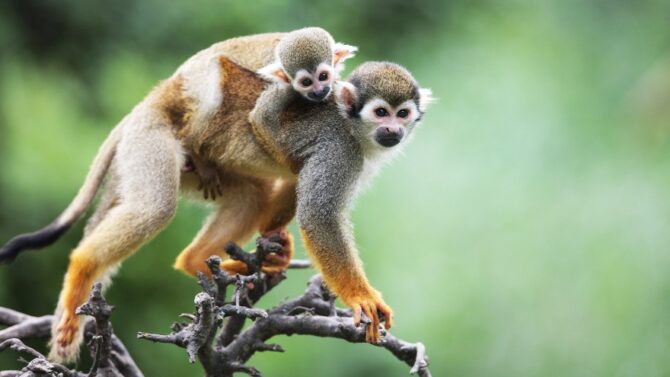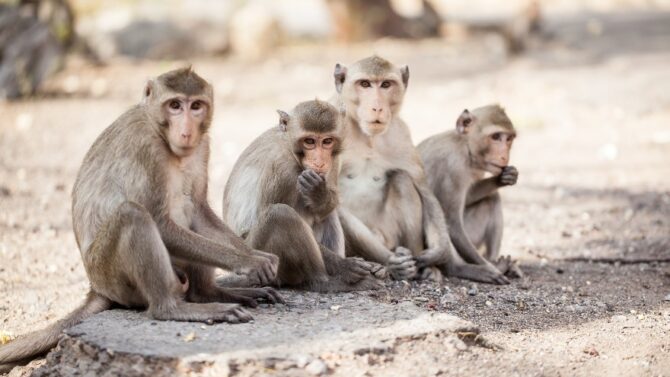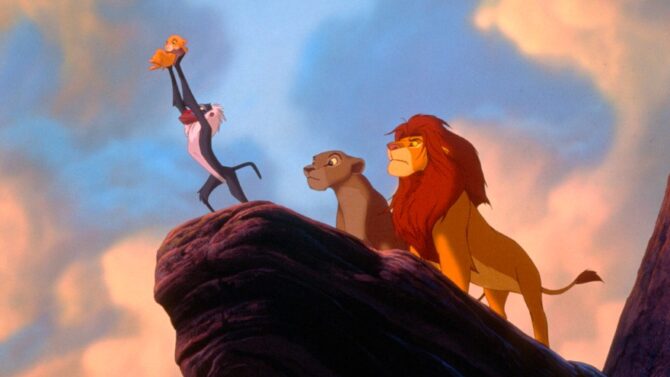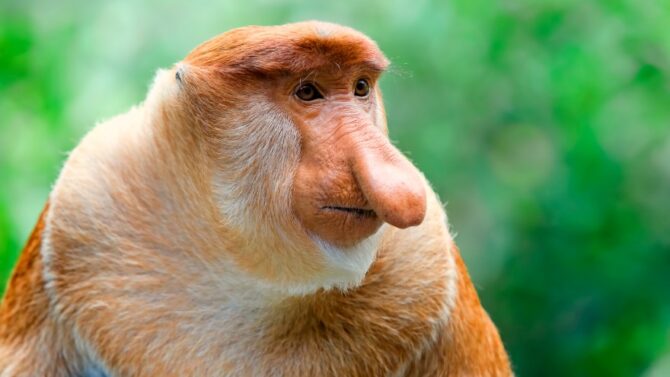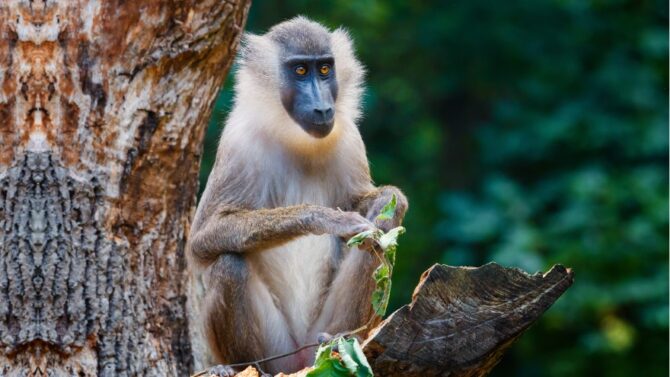The question of whether there are wild monkeys in Florida is one that pops up very often.
Interestingly, several species of wild monkeys can be found in Florida, including the rhesus macaque, crab-eating macaque, common squirrel monkey, and vervet monkey.
These primates are valuable to the state’s ecosystem and provide important ecological benefits.
In this article, we’ll explore the wild monkey species in Florida and share some photos and interesting facts about them.
So, let’s dive right into it!
4 Species of Wild Monkeys in Florida
Florida, known for its warm climate, beautiful beaches, and diverse culture, is home to a few invasive species, including wild monkeys like the squirrel monkey, vervet monkey, crab-eating macaque, and rhesus macaque.
These primates are not native to Florida but were introduced through various zoos, research facilities, private collections, and entertainment businesses.
Now, let’s take a closer look at these four wild monkey species:
1. Rhesus Macaque
Scientific Name: Macaca mulatta
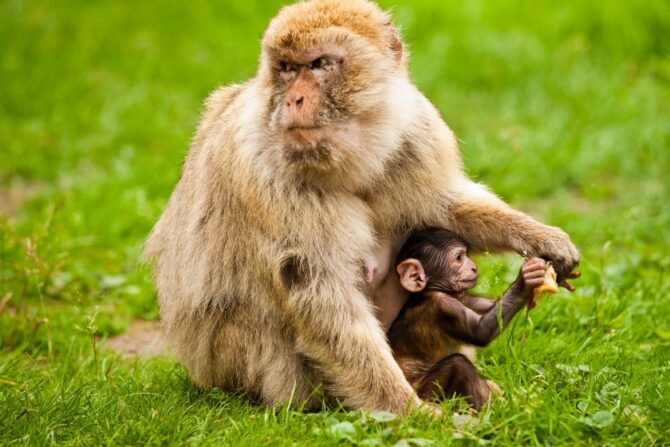
The rhesus macaque is a wild monkey native to parts of Asia, including Afghanistan, Nepal, Thailand, Pakistan, India, Southeast Asia, and China.
These medium-sized monkeys are not native to the United States but have established populations in Florida, where they have lived since being brought to the state as part of a tourist attraction in the 1930s.1
They can be found in various parts of Florida, including the Everglades and the Florida Keys, and are well adapted to the state’s subtropical climate.
Rhesus macaques are known for their reddish-brown fur and distinctive facial features, such as the white skin patch on their buttocks.
Being social creatures, they frequently reside in huge groups.
One well-known population can be found near Ocala at the Silver River State Park.
2. Vervet Monkey
Scientific Name: Chlorocebus pygerythrus

The vervet monkey is a wild monkey native to several southern African countries and some eastern countries on the continent.
Vervet monkeys were introduced to Florida in the 1940s after escaping from a research facility that imported apes from Africa.2
These monkeys have adapted well to living in Florida and can be found in various habitats, including forests, swamps, and even suburban neighborhoods.
While they are not considered endangered, vervet monkeys are protected by Florida law, so harming or killing them is illegal.
Vervet monkeys can be distinguished by their long tails and blue scrotum.
Adult males can live alone or in small groups of two to five other males, despite being inherently sociable creatures.
3. Common Squirrel Monkey
Scientific Name: Saimiri sciureus
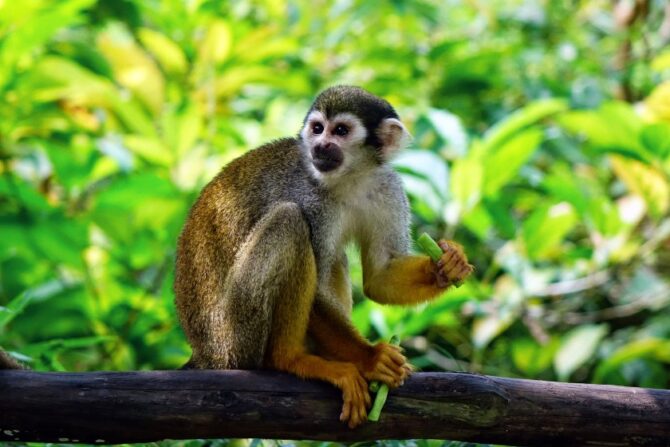
Originally from Central and South America, squirrel monkeys were brought to Florida in the 1960s for a scientific study.3
The project was later canceled, and the monkeys were released into the wild in Florida.
Currently, these monkeys are not endangered, and their population is believed to be growing.
Squirrel monkeys are small, with squirrel-like bodies (hence their name), fluffy faces with black mouths and eyes, colorful fur, and long tails.
They are arboreal and are commonly found in tropical forests.
In the wild, these monkeys are known for their ability to climb trees.
However, as pets, squirrel monkeys are popular due to their adorable looks and playful personalities.
4. Crab-Eating Macaque
Scientific Name: Macaca fascicularis
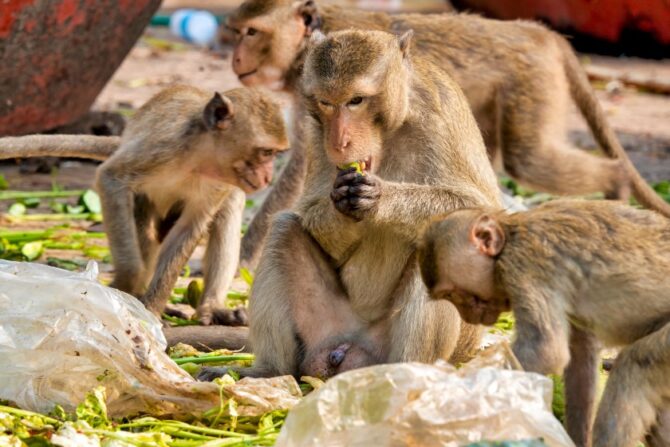
The crab-eating macaque, also known as the cynomolgus monkey or long-tailed macaque, is a type of monkey native to Southeast Asia.
Its habitat ranges from southern China to Indonesia and northern India.
These monkeys have recently become established in Florida, possibly due to the pet trade.
Despite their name, crab-eating macaques primarily consume fruit and seeds, though they may also eat crabs if available.
They are social animals that live in groups called troops, which are led by a dominant male and typically consist of several females and their offspring.
Crab-eating macaques are classified as vulnerable due to declining populations caused by habitat loss and fragmentation, hunting, and pet trade.
Interesting Facts about Wild Monkeys in Florida
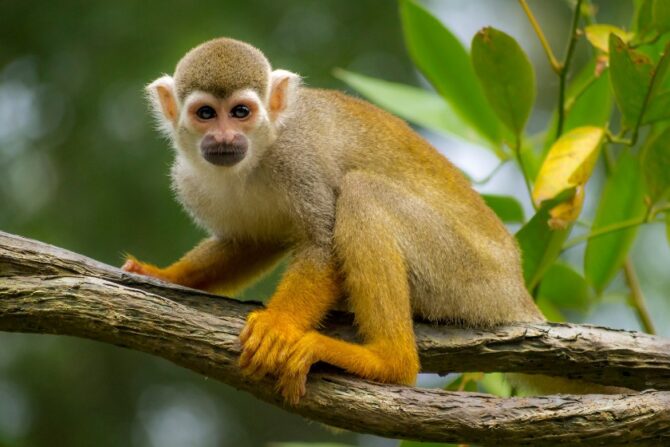
The wild monkeys in Florida have a long and fascinating history, and there are many interesting facts to learn about them.
Here are just a few:
- No primate species are native to Florida, regardless of the current population.
- Rhesus monkeys and crab-eating macaques are frequently used in laboratories, contributing to their presence in the wild in Florida.
- Rhesus macaques are intelligent and social animals with complex social relationships. They engage in grooming behaviors as a means of reinforcing social bonds and have been observed exhibiting problem-solving abilities.
- Vervet monkeys are skilled communicators, using a range of vocalizations, body language, and facial expressions to interact with one another and establish social hierarchies. They are particularly well-known for their vocal communication.
- Crab-eating monkeys, known for their intricate social behavior and relationships, often engage in grooming behaviors to strengthen social bonds.
- Squirrel monkeys are known for their wide range of vocalizations, which they use to communicate with one another. In addition to vocalizations, they also use body language and facial expressions to convey meaning and establish social hierarchies.
- Rhesus macaques, originally from Asia, were brought to Florida in the 1930s as entertainment for tourists. They were released onto an island in Silver Springs State Park and were able to reproduce and form a population.
- Crab-eating macaques, native to Asia, were brought to Florida in the 1950s as a tourist attraction and released onto an island in Everglades National Park. Over time, they have spread to other parts of the state.
- Squirrel monkeys, native to Central and South America, were introduced to Florida in the 1960s as a tourist attraction. They were released onto an island in Monkey Jungle, a popular tourist attraction in Miami.
- Vervet monkeys are originally from Africa but were brought to Florida in the 1970s for tourism purposes. They were released onto an island at Lion Country Safari, a drive-through safari park in West Palm Beach.
- Some monkey species have adapted well to Florida’s climate and established breeding populations in the wild. However, their presence has caused controversy due to the potential for transmitting diseases to humans and causing damage to crops and gardens.
- Crab-eating macaques are known for their skillful use of tools, including sticks and stones, to obtain food from difficult-to-access locations. These monkeys are known for being clever and resourceful in their foraging behaviors.
- In Florida, it is against the law to have a monkey as a pet. It is crucial to remember that monkeys are wild animals that can be dangerous when approached or touched. They can also carry diseases that can be transmitted to humans and may pose a threat to native wildlife and the environment. If you encounter a monkey in Florida, it is best to observe it from a distance and not try to interact with it or give it food.
- To reduce the number of wild monkeys in Florida, the state has implemented various strategies such as sterilization programs and hunting permits. However, these animals can still be spotted in various parts of the state and are a popular attraction for tourists and residents.
- Wild monkeys can be found in several locations in Florida, including Silver Springs State Park, Dania, Homosassa Crystal River, The Bonnet House Museum & Gardens, and Ocklawaha River.
How Are Wild Monkeys Able to Survive in Florida?
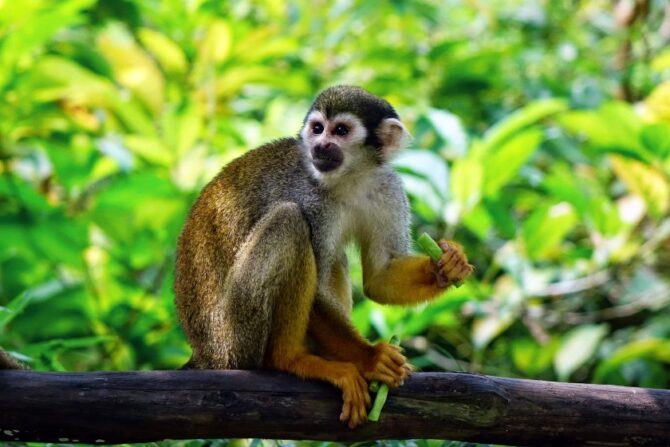
There are various theories about why monkeys were brought to Florida.
Some people think it was for entertainment, while others believe it was for scientific research.
Regardless, wild monkeys have been able to thrive in Florida’s warm climate and can be found in many locations, like Silver Springs State Park and the Kennedy Space Center.
Florida, which includes tropical and subtropical areas, has a similar climate to that of Africa, which is the native habitat of these monkey species.
The warm temperatures, mangroves, and swampy forests of Florida provide suitable living conditions for monkeys.
Additionally, as an omnivorous species, monkeys have a vast diet, including fruits, plants, eggs, insects, and small animals—all of which are readily available in Florida’s humid forests and swamps.
Moreover, the monkey populations in Florida come from adaptable species and can thrive in different African and Asian environments.
Wild-captured specimens that escaped would likely have had no difficulty finding food and adjusting to the environments in Florida.
The Impact of Wild Monkeys on Florida’s Ecosystem
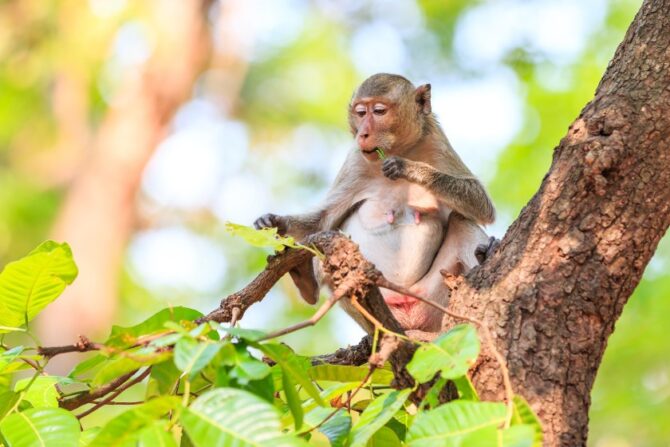
Florida’s wild monkey population, introduced for the tourist industry and scientific research, has significantly affected the state’s ecosystem.
These non-native animals compete with native wildlife for resources and can transmit diseases that lead to declines in native species populations.4
They also engage in destructive behaviors such as uprooting plants, digging up soil, and stripping trees of bark, which can result in habitat destruction.
To address this issue, control programs and public education campaigns have been put in place to reduce the wild monkey population and discourage feeding and interaction with them.
It is important to take action to minimize the impact of these animals on Florida’s ecosystem.
What Are the Current Management Strategies for Florida’s Wild Monkeys?
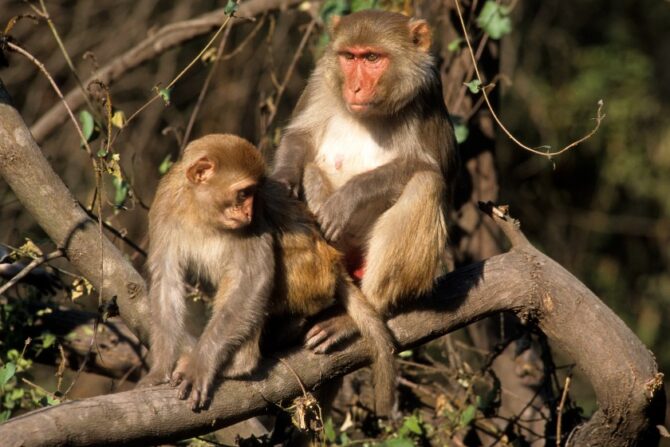
While Florida’s wild monkey population has attracted tourists and residents, it has also caused many problems.
These include attacks on humans, the transmission of diseases like herpes B and tuberculosis, and property damage.
Fortunately, the Florida Fish and Wildlife Conservation Commission (FWC) has implemented methods like sterilization, in which the monkeys’ reproductive organs are removed to reduce their population growth.
It has also adopted non-lethal control methods like making loud noises and spraying the monkeys with water to discourage them from entering certain areas.
The FWC also educates homeowners on how to prevent monkeys from accessing resources on their property to reduce their dependence on humans and discourage them from entering urban areas.
This multifaceted approach aims to reduce the negative impacts of the monkey population on humans and the environment while promoting the monkeys’ welfare.
Florida’s Wild Monkeys and Human Interaction
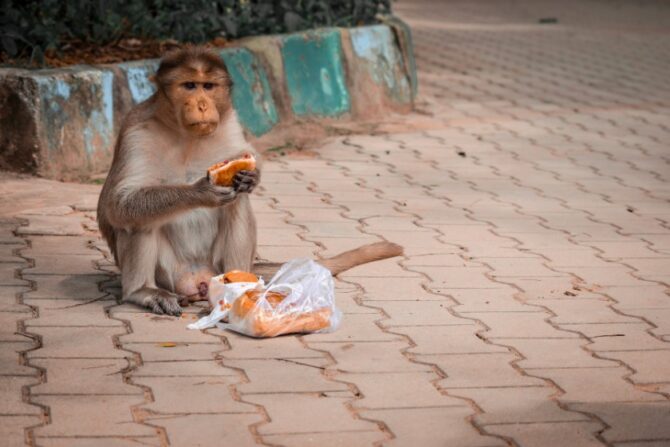
The population of wild monkeys in Florida has grown significantly in recent years.
While these animals may appear cute and cuddly, it is important to remember that they are still wild animals and should be treated cautiously.
Unfortunately, human interaction with monkeys has led to several problems, including monkeys begging for food from tourists and becoming increasingly aggressive while doing so.
This puts both the monkeys and humans at risk.
To protect both humans and monkeys, feeding monkeys in Florida has now been declared illegal.
However, you can still observe them from a safe distance.
If you encounter a wild monkey, maintain a distance of at least 50 feet and do not approach it.
These animals require specialized care and environments that most people cannot provide.
By respecting their wild nature and not attempting to domesticate them, we can coexist peacefully and ensure the continued survival of Florida’s wild monkeys.
Other Invasive Species in Florida
Florida is known for its diverse array of native plants and animals.
However, it also has a number of invasive species that have been introduced to the state and have harmed the local ecosystem.
One such species is the Burmese python, a snake that’s native to Southeast Asia and has become established in the Everglades, where it preys on other native animals such as deer and rabbits.
The Nile monitor, a large lizard native to Africa, is also found in Florida and has been known to prey on native birds and small mammals.
Another invasive species in Florida is the lionfish, a fish native to the Indo-Pacific region that preys on native other fish and can harm the ecosystem.
Next on the list is the red imported fire ant, native to South America.
This animal can also be found in Florida and is known to be aggressive and can cause harm to humans and damage crops and plants.
Other invasive species in Florida include the tegu, wild boar, and cane toad.
It is important to prevent the spread of these invasive species to protect Florida’s ecosystem.
Conclusion
The presence of non-native monkeys in Florida has been controversial due to their potential negative impact on native wildlife and human populations.
Efforts to manage and control these monkey populations have been made, but they can be difficult to implement effectively.
Fortunately, there are various organizations and groups dedicated to researching and protecting these monkeys.
You can visit local zoos and wildlife sanctuaries to learn more about them and see them in person.
If you happen to come across one of these animals while in Florida, be sure to take the opportunity to observe them.
However, do well to keep your distance from them.
References & Notes
- Nonnative Monkey Populations of Florida: History, Status, and Potential Impacts. University of Florida
- Nonnative Monkey Populations of Florida: History, Status, and Potential Impacts. University of Florida
- Squirrel Monkey ( Saimiri spp.) Research and Resources. ILAR JOURNAL
- These wild monkeys thrive in Florida—and carry a deadly virus. National Geographic
